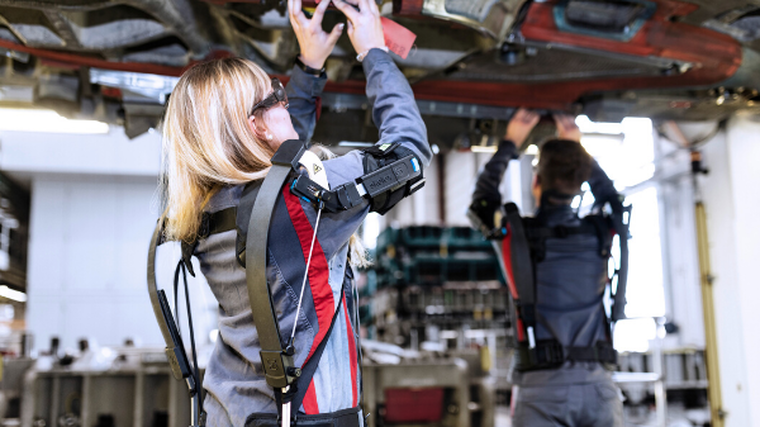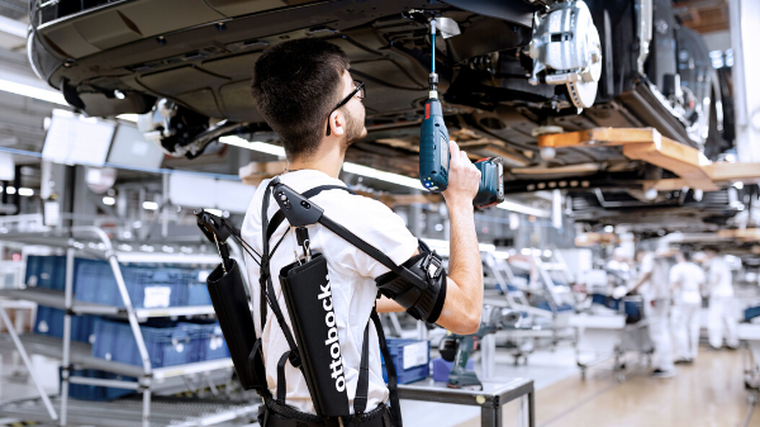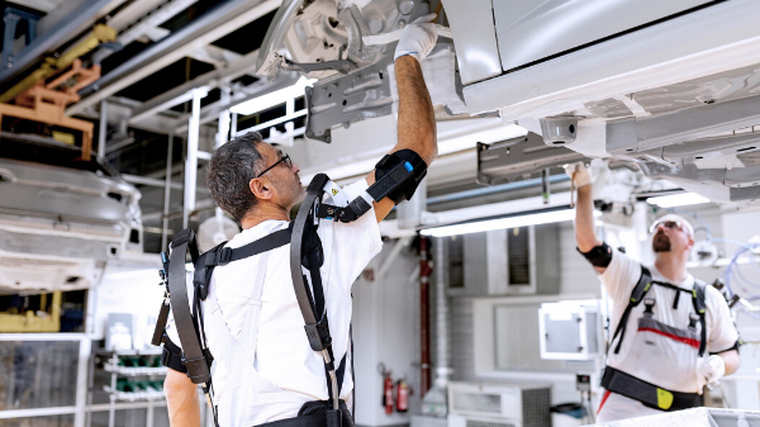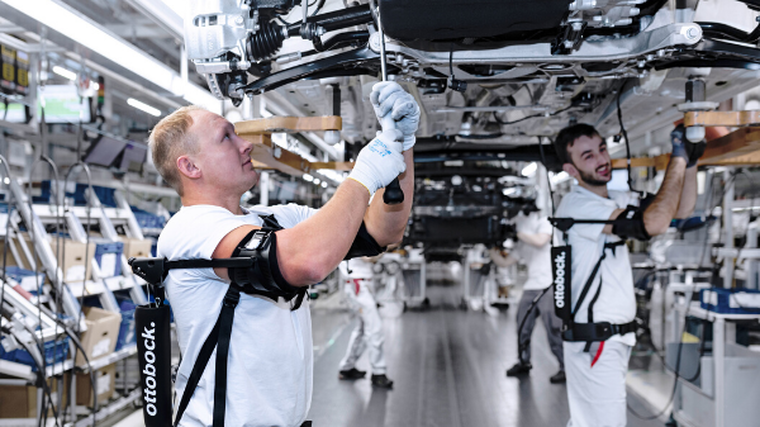Audi puts exoskeletons to test
Audi is conducting a comparative study of two exoskeletons to further improve employee ergonomics on its production lines.
The external support structures are designed to help staff while they perform overhead tasks by protecting their joints and helping muscles tire less quickly.
About 60 workers are now using the tools over a period of several weeks at assembly, paint shop and tool-construction stations at the company’s factory in Ingolstadt, Bavaria.
Audi says many process steps in production involve “unavoidable” overhead jobs. When technical and organisational measures for optimum ergonomics have been exhausted, exoskeletons often offer valuable support.
Two of these aids – the Paexo manufactured Ottobock and Skelex 360 made by Skelex – are being tested.
“Our employees are our most important assets,” says Peter Kössler, Audi’s board of management member for production and logistics. “By constantly reducing burdens at workstations, we can enhance health and well-being. New technologies, such as exoskeletons, also contribute and can making production more progressive.”
Comprehensive practical tests are designed to help adapt the exoskeletons to the employees’ needs. They are being tested in static and dynamic activities. These include installing brake lines, screwing underbody panelling into place, and applying corrosion and sealing protection. Audi has already experienced promising outcomes with one of two exoskeletons at its Győr plant in Hungary.
The Paexo and Skelex 360 are worn like backpacks and secured by a belt around the hips. Shells support the arms during overhead work to absorb part of the limbs’ weight and redirect it to hips via support structures to cut shoulder stress. This is done mechanically and with no motorised drive.
Exoskeletons are nothing new in Audi production. The company has already been working with such aids for about four years to enhance ergonomics. Since then, the marque has regularly tested different systems in pilot projects.
One such system is a structure that reduces back burden while lifting or moving objects. Initial tests in logistics, press plant and assembly have yielded promising results.









